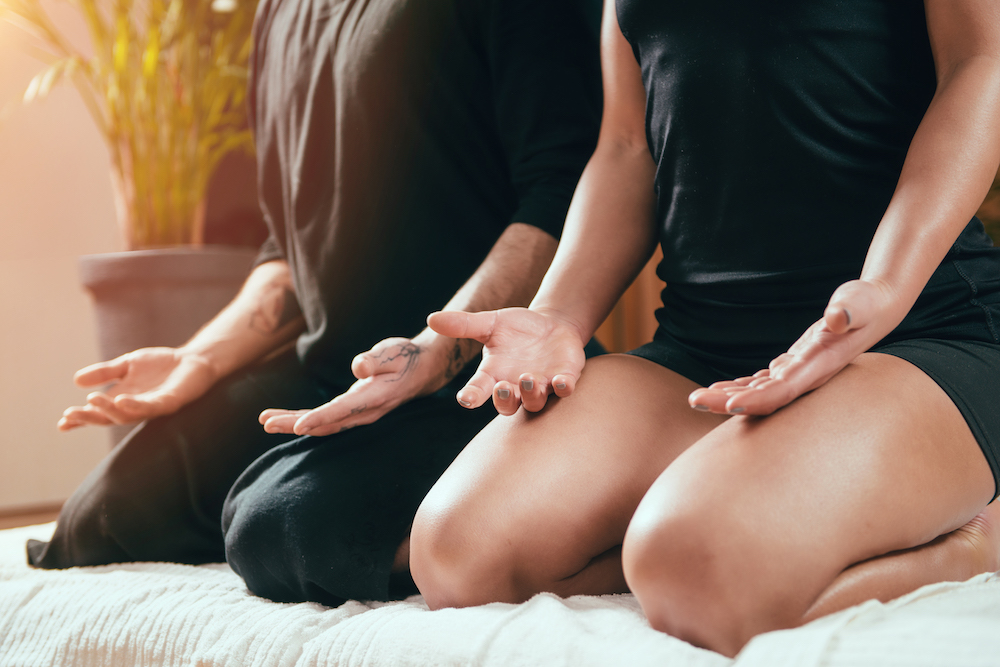Millions of people suffer from chronic pain and living with chronic pain can be difficult or outright debilitating.
Pain management can also be tricky. Often, even after taking the maximum dose of painkillers, the pain soon returns with a vengeance.
But living with chronic pain is not only a physical strain, but it can also affect our mind as we desperately seek a way of escaping the constant discomfort. You just want it to stop…or at least be tolerable. This can lead to feelings of frustration, anger or even depression which can profoundly impact the quality of our lives.
Often, our most frequent go-to pain management options—prescription or OTC drugs – can take away the physical discomfort temporarily, but at the same time tend to disturb our mental balance. They may bring on a host of equally unpleasant physical side effects- which can add to further discomfort in the long term.
In addition, medications can often be very expensive, and people are now concerned about becoming dependent on drugs. As a result, people are seeking complementary and alternative medicine for pain management.
The following seven alternative medicine therapies have been clinically shown to help relieve pain symptoms.
-
Acupuncture
This Chinese healing art has been in use for over 2,000 years. The hair-thin needles inserted into various points on the skin target the body’s meridian system. Numerous studies have confirmed acupuncture’s effectiveness in treating pain, and the World Health Organization also includes acupuncture on its list of pain management modalities.
-
Aromatherapy
This pain management therapy uses scents from certain essential plant oils that are either applied to the skin or inhaled. Also dating back thousands of years, aromatherapy has played a key role in the medical systems of the Chinese, Indians, Egyptians, Romans, and Greeks. Studies have shown a decrease in pain symptoms in people with rheumatoid arthritis, headaches, and cancer who use aromatherapy.
-
Chiropractic
Although now a mainstream option, chiropractic is still often considered a form of complementary and alternative medicine. Chiropractors focus on the spine, and most chiropractic visits involve adjustments that are designed to realign the body to promote self-healing. Chiropractic adjustments can be effective for a variety of pain issues, including lower back pain, neck pain, carpal tunnel, headaches, and sports injuries.
-
Hypnotherapy
This alternative approach is used to promote relaxation and induce an altered state of consciousness. The resulting psychological shift is intended to help people gain control over their states of awareness, as well as gain control over their physical pain. Research suggests that hypnosis can help reduce the need for pain medication by decreasing the anxiety that’s typically associated with pain.

-
Massage
Massage feels wonderful, but it’s also a proven healing method for many types of pain. Through manipulation of the body’s soft tissues, massage therapy influences the muscles, circulation, lymphatic and nervous systems. A recent review of multiple trials concluded that massage is beneficial for chronic lower back pain. It also can help relieve tension, reduce stress, relieve anxiety, improve sleep, and promote relaxation throughout the entire body.
-
Physical Therapy
Also a mainstream option, physical therapy is a non-surgical treatment for pain. And unlike other traditional medical treatments (medication, injections, etc.), physical therapy can also help prevent and lessen future recurrences of pain. According to Evelyn Hecht, Physical Therapist and President of EMH Physical Therapy in NYC:
“A physical therapist or any bodyworker who helps you feel relaxed or energized can mitigate your pain. Myofascial release, massage, and joint mobilization therapies restore motion and allow normal function. It releases trapped nerves that travel through tight muscles and fascia and helps your body to move freely.” In my re.lieve Program; Solutions For Chronic Pain Toolkit, I give my patients a guide to help them through a daily practice of breath work, visualization, gentle stretching, daily steps, sleep tracking and more, which often helps lower their pain significantly within 90 days.”
-
Meditation
Meditation is another option becoming very popular as a method to manage pain. MRI studies now show that the brain of a person meditating has a significant decrease in pain reception. Meditation can alter the way the mind perceives pain, making it more bearable. It is a natural and effective way to ease physical pain.
Although meditating may take some practice, it is possible to be in a relatively calm and relaxed emotional state even when in physical pain. In fact, it is possible to learn to step aside from suffering and begin to handle pain very differently indeed. In effect, mindfulness meditation hands back to you the “volume control” for your pain.
Being able to relax and be in the present moment is key to any meditation technique. Try Rewire Me’s “5 To Thrive” Relaxation Meditation to get you started.



